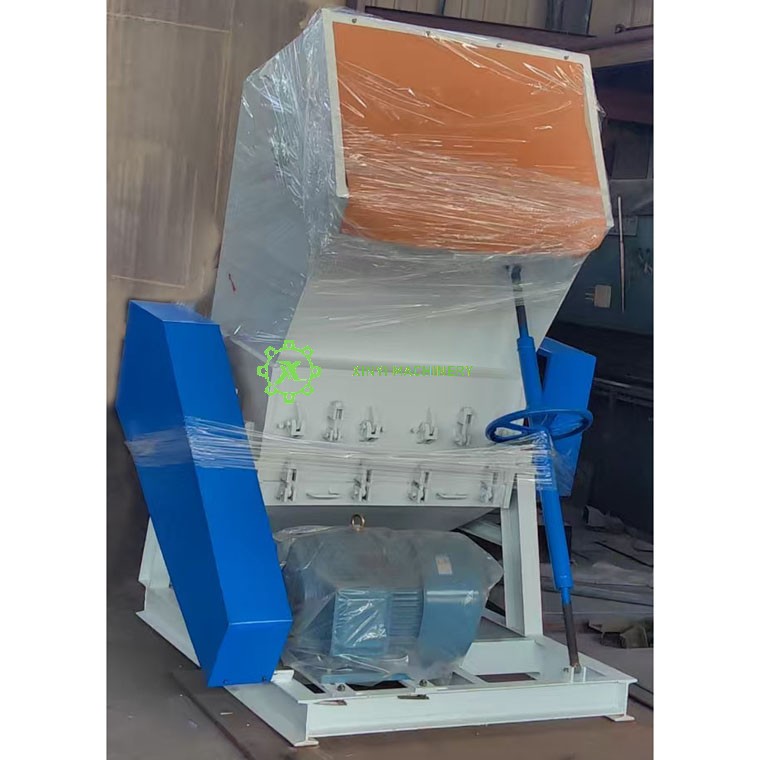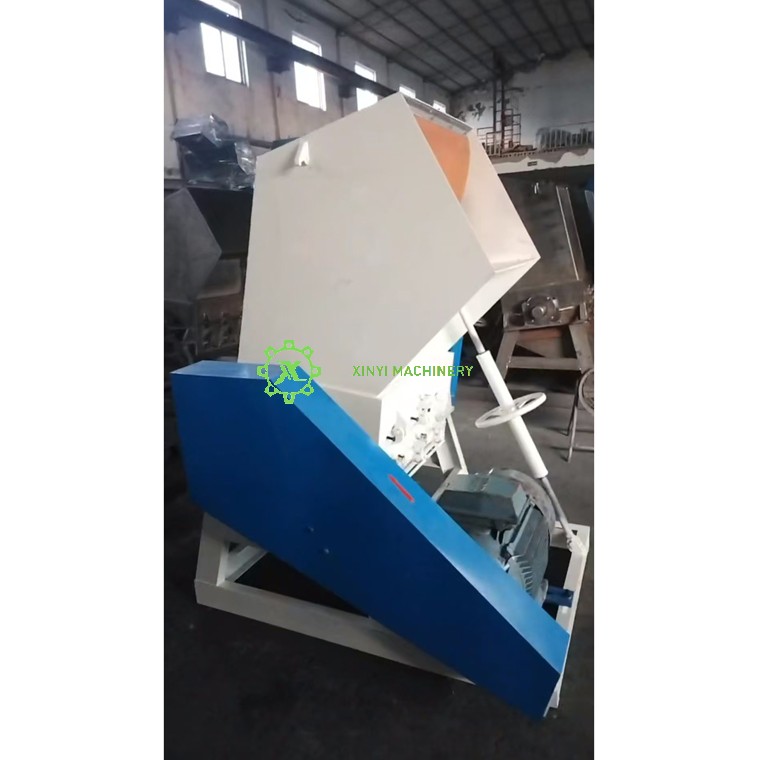A standard PET bottle crusher can crush PVC waste plastics, but with important caveats related to equipment design, operational adjustments, and maintenance. Here’s a concise breakdown:
✅ Key Takeaways
Mechanical Feasibility
PET crushers (single-shaft, high-torque grinders) are engineered for hard plastics, including PVC, PET, and ABS.
They use rotating blades to shear/shred materials – a process effective for both PET bottles and rigid PVC (e.g., pipes, sheets).
Critical Challenges
Abrasion Resistance:
PVC is harder and more abrasive than PET, accelerating blade wear.
→ Solution: Use crushers with hardened alloy steel blades (e.g., SKD11, 9CrSi).Torque/Power:
PVC requires higher torque to crush.
→ Solution: Opt for crushers with ≥37 kW motors (e.g., XY03001-1000, XY03001-800 of XINYI MACHINERY) for sustained PVC processing.Output Differences
PET crushers typically produce 20–40 mm flakes – ideal for recycling.
PVC may require secondary crushing for uniform sizing due to its rigidity.
⚠️ Recommendations
Confirm Crusher Specifications: Ensure the model explicitly lists PVC compatibility (e.g., XY03001-1000, XY03001-800 of XINYI MACHINERY).
Prioritize Maintenance: Inspect blades 2–3× more frequently for PVC vs. PET.
Test First: Run small PVC batches to check for overheating/jamming before full-scale use.
🚫 When to Avoid
Thin-walled PET crushers: Low-power machines (<22 kW) or those designed only for films/PP risk damage with PVC.
Mixed streams: Avoid crushing PVC + PET together – PVC contamination ruins PET recycling.
💡 Bottom Line: Industrial PET crushers can process PVC waste if designed for multi-material use and properly maintained. For heavy-duty PVC recycling (e.g., pipes), invest in crushers with ≥37 kW power, hardened blades, and torque control. Always consult the manufacturer first.





